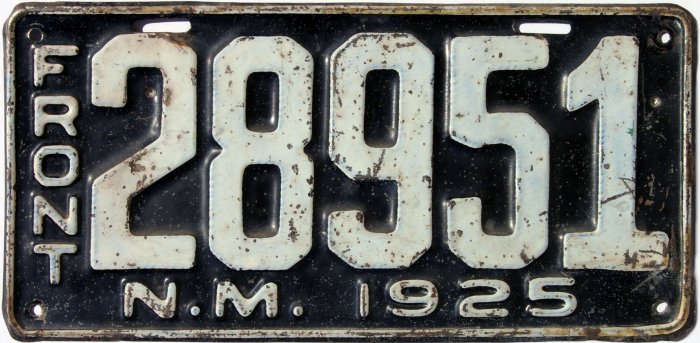
The Law of 9’s
Law of 9s as observed by Aaron L Williams
Once I remember traveling on a long road trip with my parents and siblings. I must’ve been in my early teens. It was 7 of us crammed in a small car and I was bored out of my mind so I found an exciting way to keep my mind entertained on this seemingly never ending drive. I would count license plate numbers on cars. That would keep me thinking fast as cars switched lanes and maneuvered through traffic. At first it was exhilarating as cars would pass us by giving me moments to calculate the sums of all numbers. Then something happened unexpectedly. Traffic slowed down and I was stuck following the same car for miles! I would drive myself crazy if I kept recounting those darn numbers! So I decided to do something. I decided to keep counting. Meaning, if the sum of all the numbers were 12, then I would just count that number as well. So 12 is one plus two, the answer is 3. There wouldn’t have been much more to this story if my mind would’ve just stopped there but it didn’t. Traffic began to move again and I encountered a license plate with a 9. However, the 9 was the 2nd to last number, which allowed this pattern or law of 9s to come screaming out at me! When there is a 9, the answer to the final sum will ALWYS be equal to the sum of that following number! So let’s simply. Our license plate has two numbers 93. The final sum of this number is 3. How? Well, 9 plus 3 equals 12. 1 plus 2 equals 3. So the final sum of any number proceeding 9 will always equal that number. 9 was my cheat code to count faster. Now, counting license plates was no longer about the numbers it was about the logic. Every number that proceeded 9, I already knew that some would be equal to that number, so the question is, if I have a license plate with several numbers, how many times did I cross 9? That will help me guess which set of numbers will be my correct sum. For example, if by counting using my 9 system I end up with the number 3, is my sum 12 or is it 21 or is it 30? Because it is a 3, those are the only sums it can possibly be, but, how many times did I cross 9? In order to fully understand this logic or question, I will have to fast track and write out the pattern that the 9s revealed to me for this game to make sense…Here’s the pattern
Rules of the game, as I calculate, I never truly want to add or know the number so I just use 9 to guide me
LAW DEMONSTRATED
My made up license plate number is 378392
Three (<3) plus 7 equals to a sum more than 9 so we must use logic to find the number that will carry over. 7 is 2 less than 9. The final sum of 7 and 3 will be 2 less than 3 because 7 is 2 numbers less than 9. The final sum of 7 and 3 has no other option of being 1. So those two numbers are really telling me that I need to carry over the number 1. If you don't see it yet, I'll go farther and add. 7 plus 3 equals 10. Let's break apart the numbers in 10 and add them now 1 plus 0 equals 1. But we already knew this because 7 is 2 less than 9. So if I try to add any number to a 7, it will always equal 2 less than 9. In our case 3 was the number so we keep 1 as our final sum
So, the final sum of the first two numbers 37=”1″
378392
We’ve summed up 37 now adding the 8. So now 1+8 = 9. We keep 9 as our 9 sum. Why? Because we haven’t crossed 9. If it were 10, our final sum would be 1. This taught me that all counting resets at 9. 9 is the one and only number that will cause the following number to be the sum of itself
The final sum of 378=”9″
378392
We’ve summed up 378 now adding the 3. So 9 +3 = 3. We keep 3 as our sum
The final sum of 3783=”3″
378392
We’ve summed up 3783 now adding 9. So 3+9=3. We keep 3 as our sum. By now you might be curious on this. But that’s why this is a logic game and not a numbers game, but I’ll indulge. So without touching our final answer, let’s test the theory of 9s to see how it works. 9+3=12. Great. 9+3+9=21. Great. So in both answers guess what? Our final sum is still 3. 12 being 1+2 is 3 and 21 being 2+1 is 3. The logic is in remembering, how many times did I cross 9 so that I can correctly deduce the sum of all numbers in the license plate. You must admit, this is a much more invigorating challenge than merely summing the random numbers that pass by. Let’s continue
37839=3
378392
Only one number left to add so this is easy. Just the number 2. 3+2=5. This can only mean our final sum of all these numbers equals 5. So is it, 13, likely not? 23, 32, or 41? That depends, how many times did I cross 9
How my mind calculates 378392
Three (3+7). 7 is two less than 9 so deduct 2 from 3 and I get 1
*just crossed 9*
One (1+8) equals 9 so 9
Nine (9+3) equals 3
*just crossed 9*
Three (3+9) equals 3
*just crossed 9*
Three (3+2) equals 5
The answer has to be 32 because we crossed 9 three times
Thus is the law of 9s
Written by Aaron L Williams


